While NVIDIA is phasing out its Quadro line of GPU’s for new products, we thought we would look at one Turing-based GPU with enormous potential that we have not looked at yet. In this review, we are going to show you around the NVIDIA Quadro RTX 4000, which is a low power single slot GPU. We are then going to subject the Quadro RTX 4000 to our battery of compute-focused GPU tasks. Let us take a look at what the Quadro RTX 4000 has to offer.
NVIDIA Quadro RTX 4000 Overview
NVIDIA Quadro RTX 4000 is a single-slot GPU with a length of 9.5″ long. The outer case is very stylish with a shiny chrome covering and a bright green band across the middle. It is an impressive looking graphics card, be warned, it will attract fingerprints on the chrome surfaces.
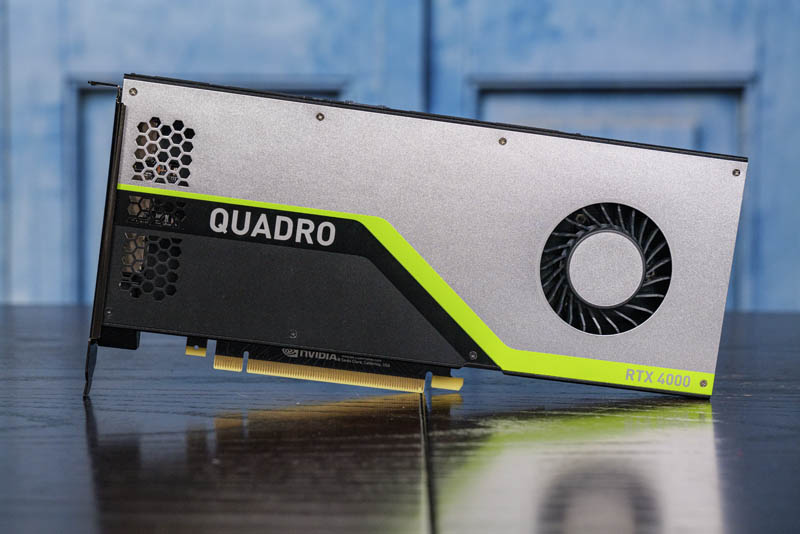
While several of the Quadro RTX GPUs include a backplate, which we like, the Quadro RTX 4000 does not. This would add some structural rigidity and help protect the components mount on the backside of this $900 GPU.
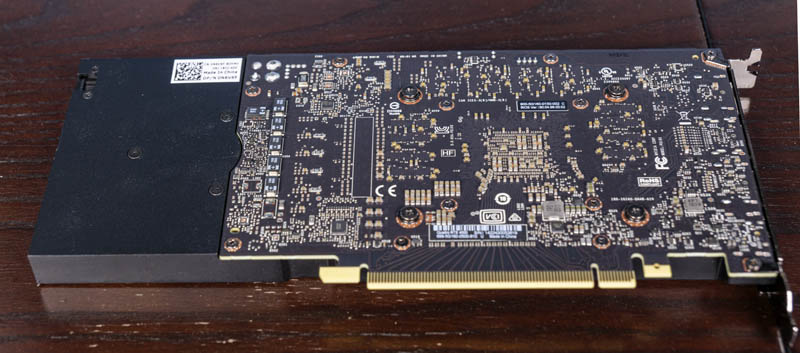
At the end of the Quadro RTX 4000, we find the video outputs, 3x DisplayPort 1.4, and 1x VirtualLink port for VR head-mounted displays.
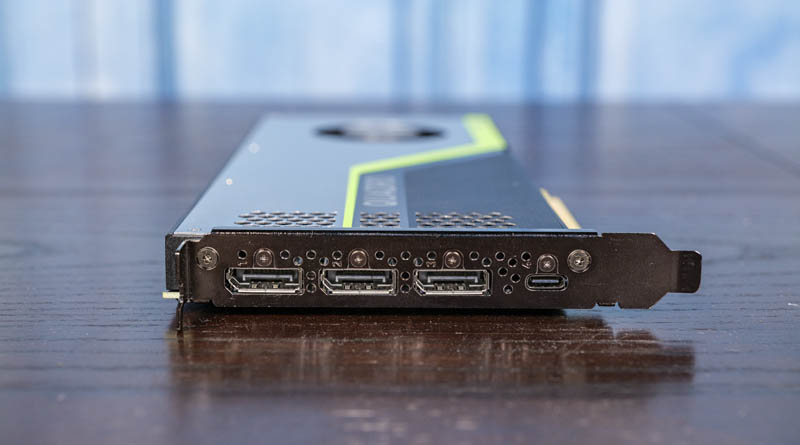
The power connection is located at the end of the Quadro RTX 4000, which should be more comfortable for server mountings, 1x 8-Pin connection.
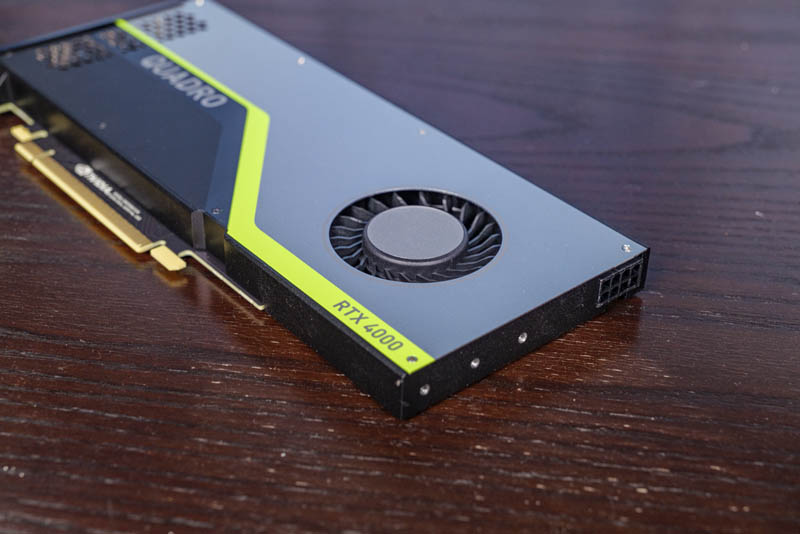
The top of the single-slot cooler card has stereo and sync ports for professional workstations, but there are no NVLink/ SLI connectors.
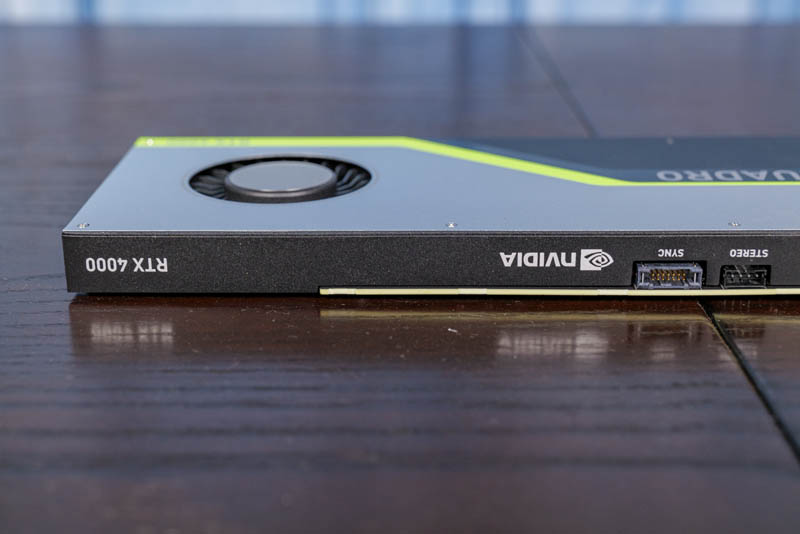
We wanted to take a moment and focus on why this single-slot configuration is going to be interesting to our readers. Aside from the typical professional workstations where a single-slot cooler can mean a smaller workstation, there is also an opportunity to maximize density. An example uses a Gigabyte C621 AORUS Xtreme motherboard designed for Xeon CPUs. Here, a total of seven Quadro RTX 4000 GPUs can be installed. For AI workloads that can scale to multiple GPUs better than scaling up in a single GPU, this is a great example of what can be accomplished using an off-the-shelf motherboard.
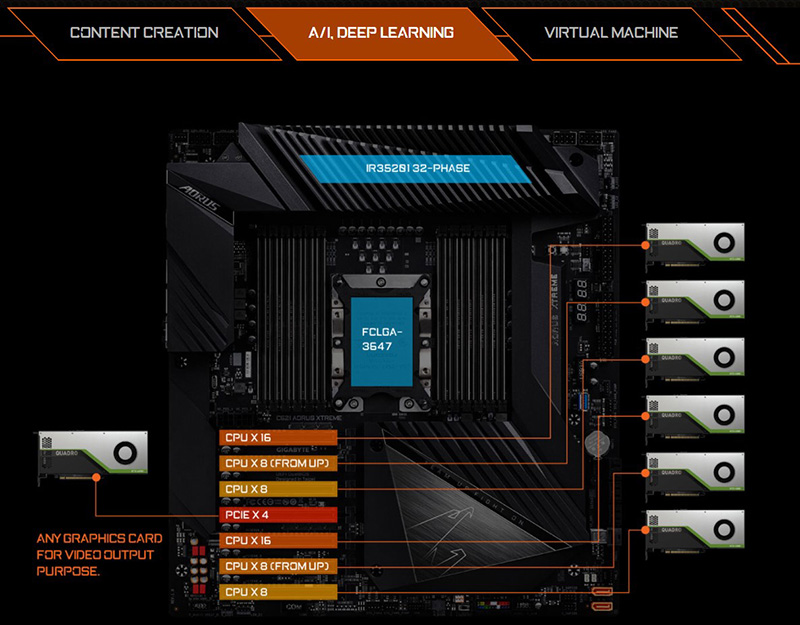
NVIDIA offers much larger GPUs but the combination of the single-slot form factor and the blower-style cooler makes scaling to multiple GPUs more feasible.
Next, let us take a look at the Quadro RTX 4000 key specifications and continue with our performance testing.

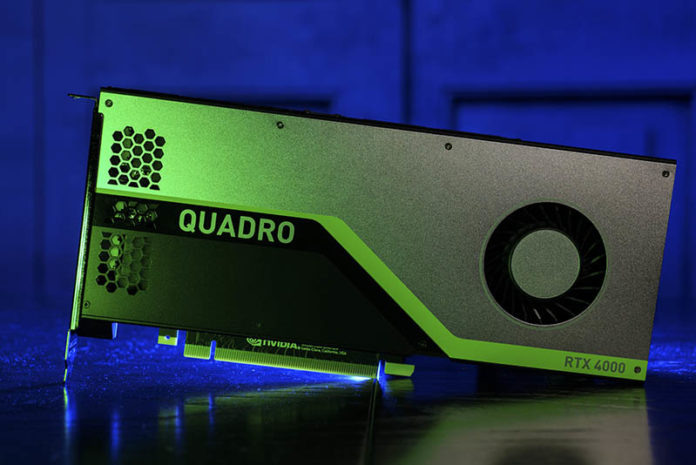



The Quadro RTX 4000 has served me well at work in an external Thunderbolt GPU chassis as a portable production GPU. It is an interesting use case as the raw GPU performance was not as critical as getting several check boxes marked on the feature set which precluded many of the lower end Quadros and made anything higher end pure overkill.
One of the requisite features was support for the Quadro Sync II board so that it can be gen-locked with various video production equipment. Since the Quadro RTX 4000 is a single slot board, the Quadro Sync II card fit in with the external GPU chassis. Note that the gen lock board can mount into a PCIe slot, all communication with the GPU card is done via ribbon cables. In a small tower system, I’ve rigged up the same genlock board inside a front panel bay to save on slot spacing.
One of the more interesting things I’ve recently tested has been with nVidia voice where this graphics card get pulled in to do some audio processing in recent months.
The one thing on my wish list for any future nVidia A4000 replacement card would be include Thunderbolt 4 ports on the GPU itself instead of Virtual-Link. It’d be far more useful and there are a handful of video production boxes with Thunderbolt 3 interfaces that could hypothetically communicate directly with the A4000’s hardware video encoders, reducing latency for real time encoding by a few critical hairs. Similarly, an HDMI 2.1 port would be valuable for the video production area that I’ve been involved in lately as a DisplayPort to HDMI adapter would not be necessary for display. Though for a multidisplay system where timing is critical, having all the ports leveraging the same adapters does equalize time vs. one native HDMI port and multiple DP ports with active adapters.
I have installed the NVIDIA RTX 4000 on my Intel s2600stbr motherboard with 256GB ram and two 10 core intel Xeon silver 4210 CPUs with windows 10 pro for workstations, and got the message after compatibility check that due to programs running in the background or OS incompatible, can anyone help with this.
I have an RTX 4000 in my Dell Precision T7610 with two 10 core Xeons and 128gb RAM. Very strangely the machine totally refused to boot up with the RTX card in the PCI-E 16x slot that in intended for the GPU card, so I removed it and put it in the lower PCI-E 16x slot and it’s fine. Bit weird but there we go.
It runs hot. Even with the case fans running fairly energetically it was in the 80’s on full load. I’ve put a slot-fan both above and below the card forcing more air to blow all over it and it’s shaved about 10 degrees off, much better. But now I’m using three slots for a single slot card, which defeats the object somewhat!
Lovely card though.